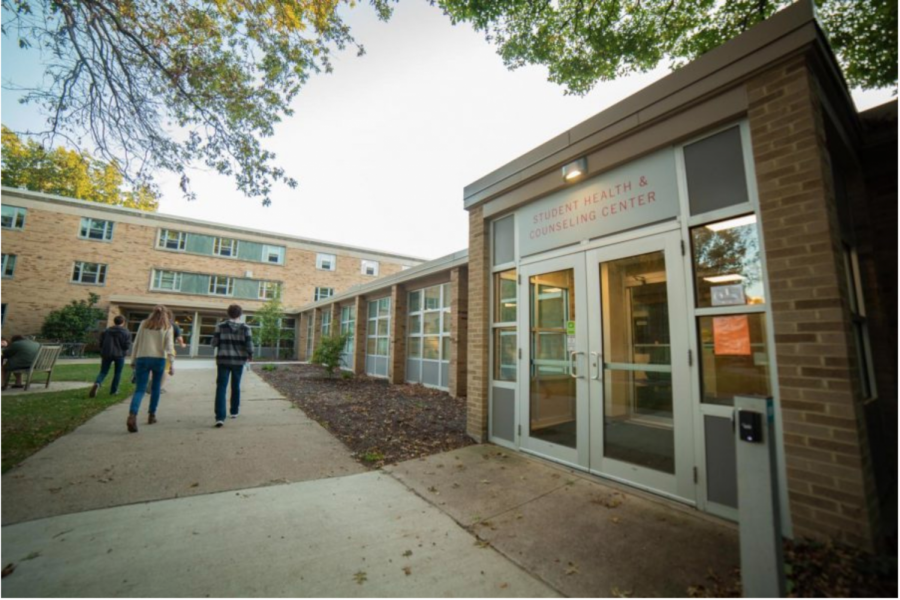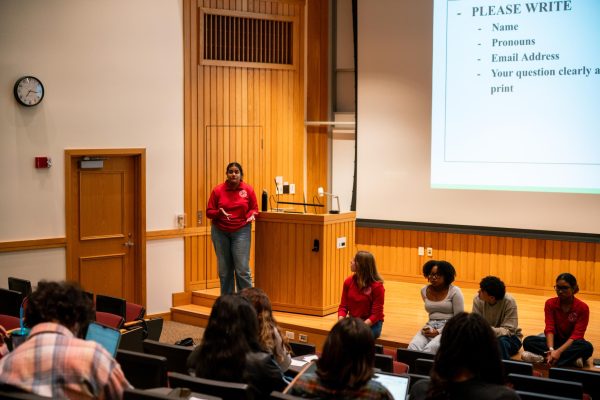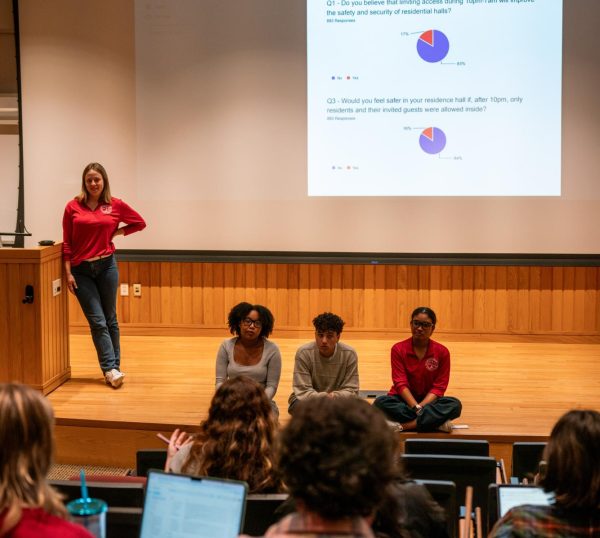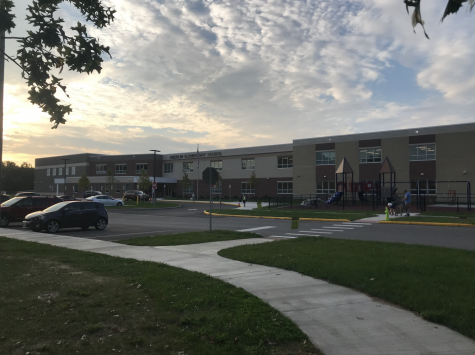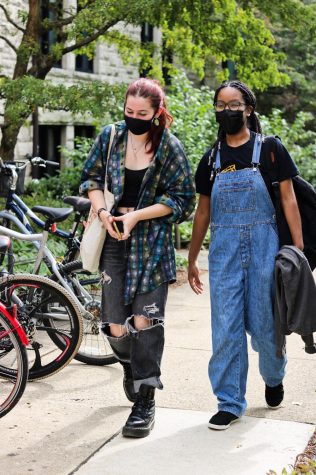Despite Pandemic Stressors, Fewer Students Seek Counseling Services
The Counseling Center has noted decreased demand for services this semester despite the pandemic.
Editor’s note: This article contains mentions of mental illness and suicide.
In a year marked by isolation, grief, and anxiety over a deadly disease, Oberlin’s Counseling Center expected to see increased demand for mental health services. Although the Counseling Center geared up their resources in anticipation, they did not see the usual beginning-of-the-year spike in student appointments. As the fall semester ticked by, Oberlin’s therapists, counselors, and psychiatrists continued to see fewer students than usual.
“Usually we have a very high demand at the beginning of a semester — we have a lot of students calling in, and that’s what we anticipate,” said Director of Student Health and Counseling Services John Harshbarger. “We did see an increase in demand as the semester progressed, but it never reached what we had the fall semester of the year before. It never reached that typical level.”
Part of this decrease can be attributed to having fewer students on campus due to the College’s three-semester plan for COVID-19 safety. Because of state laws, the Counseling Center cannot provide ongoing therapy or psychiatric appointments to unenrolled students or students who reside outside of Ohio. But even after adjusting for fewer students on campus, Harshbarger says the Counseling Center’s numbers are still lower than usual.
He does not believe that this phenomenon is Oberlin-specific — he’s heard of similar situations from directors of college counseling centers around the country, who had also expected increased demand for counseling.
“The chatter among directors is that we saw less demand overall at college counseling centers,” Harshbarger said.
But this decrease is not necessarily indicative of better mental health among college students. Studies on American college students this year show that the pandemic has actually led to significant increases in stress, anxiety, and depressive thoughts among university students.
One possible explanation for reduced rates in asking for help is that students are hesitant to do virtual therapy from their dorm rooms, as they navigate Zoom fatigue and the multipurpose use of their living space.
“There’s just endless Zoom meetings, and now therapy is reduced to that too and some people might be averse to that,” said Arman Luczkow, College third-year and chair of Student Senate’s Health and Wellness Working Group. “I think another part of it is that help seeking behavior, especially for yourself, is already very difficult. The hardest part about helping people and about the Counseling Center doing its work properly is getting people there. … In my opinion, people are probably too worn out and too exhausted and too overwhelmed to take extra action to help themselves.”
Other students with privacy concerns might be hesitant to do Zoom therapy from dorm rooms where they feel that they could be overheard.
Harshbarger has also noticed a change in the type of problems that students discuss in appointments. While typical symptoms of anxiety and depression have largely remained the same, Harshbarger has heard less about relationship and friendship anxieties during this time.
“It’s pretty typical for there to be a fair number of students who come in because they’ve experienced a breakup or they’re feeling like they’ve been rejected by their friend group,” Harshbarger said. “We didn’t see a lot of that this past semester, which makes a lot of sense, right? Students weren’t interacting with each other as much, so there weren’t those opportunities to feel like, ‘Oh, I feel rejected,’ or ‘I feel like left out, I feel like I’ve been canceled.’ … It certainly wasn’t happening as much as it normally does when we’re fully engaged with each other.”
In addition to seeing fewer students come in for counseling appointments, the Counseling Center has also seen fewer students in crisis situations.
“Generally in a semester we will have a fair number of students who end up going to the hospital because of a mental health crisis, but we really only had a handful of students this past semester,” Harshbarger said. “It was significantly less than we have had in the past. I’m not exactly sure why that is.”
This might be explained in part by a psychological phenomenon, related to the suicide-happiness paradox, studied by Professor of Economics and Behavioural Science at the University of Warwick Andrew Oswald. Oswald’s research, written in conjunction with economists Mary C. Daly and Daniel J. Wilson, found that U.S. states with the highest mean happiness also tend to have the highest suicide rates. Other studies have shown that the happiest countries — like Denmark and Finland — also tend to have the highest suicide rates. Suicide rates have also been shown to decrease — paradoxically — during wars and after 9/11.
Oswald believes that this phenomenon could be at play here.
“If they’re surrounded by a lot of happiness, then that makes them feel worse,” Oswald said. “If they’re surrounded by unhappiness, that puts their life into perspective. I don’t mean it in any horrible kind of sense, but it creates some kind of perspective. Perhaps it distracts them from their own internal strife or it just makes them think, ‘Well, maybe my life is not quite so bad.’”
Pre-pandemic, a struggling college student might feel very isolated in their depression. But during a pandemic, when there isn’t as much pressure to be happy, they might find solidarity in their peers and find their depression less distressing.
“There’s what you might call social comparisons — whether you’re aware of it or not as a human, that’s what you’re doing,” Oswald said. “These have very profound effects on mental health and happiness. We are creatures who look over our shoulders before we decide how happy our lives are.”
Still, Oswald and Luczkow believe that fewer students in the Counseling Center is not necessarily a good thing. Luczkow worries that focusing on this statistic could detract from the much-needed work that Oberlin must do to help students through the pandemic.
“There are certain things that are thrown out at us — including decreased transports [to the hospital], decreased usage of the Counseling Center, higher grades — as evidence of improved mental health,” he said. “I think it’s an obstruction to important mental health work if people start believing that, which some people do. … What’s more likely: that there are fewer people who need to go to the Counseling Center, or that this once-in-a-generation pandemic is somehow limiting people’s desires to do the very hard task of help-seeking?”
Enrolled students who are based in Ohio can get free counseling and psychiatry appointments through the College by calling the Counseling Center at (440) 775-8470. Students who are not enrolled in school or who are outside of Ohio may still contact the Counseling Center for help getting connected to resources in their area. Harshbarger encourages students who are experiencing any distress, no matter how small, to reach out for help.


